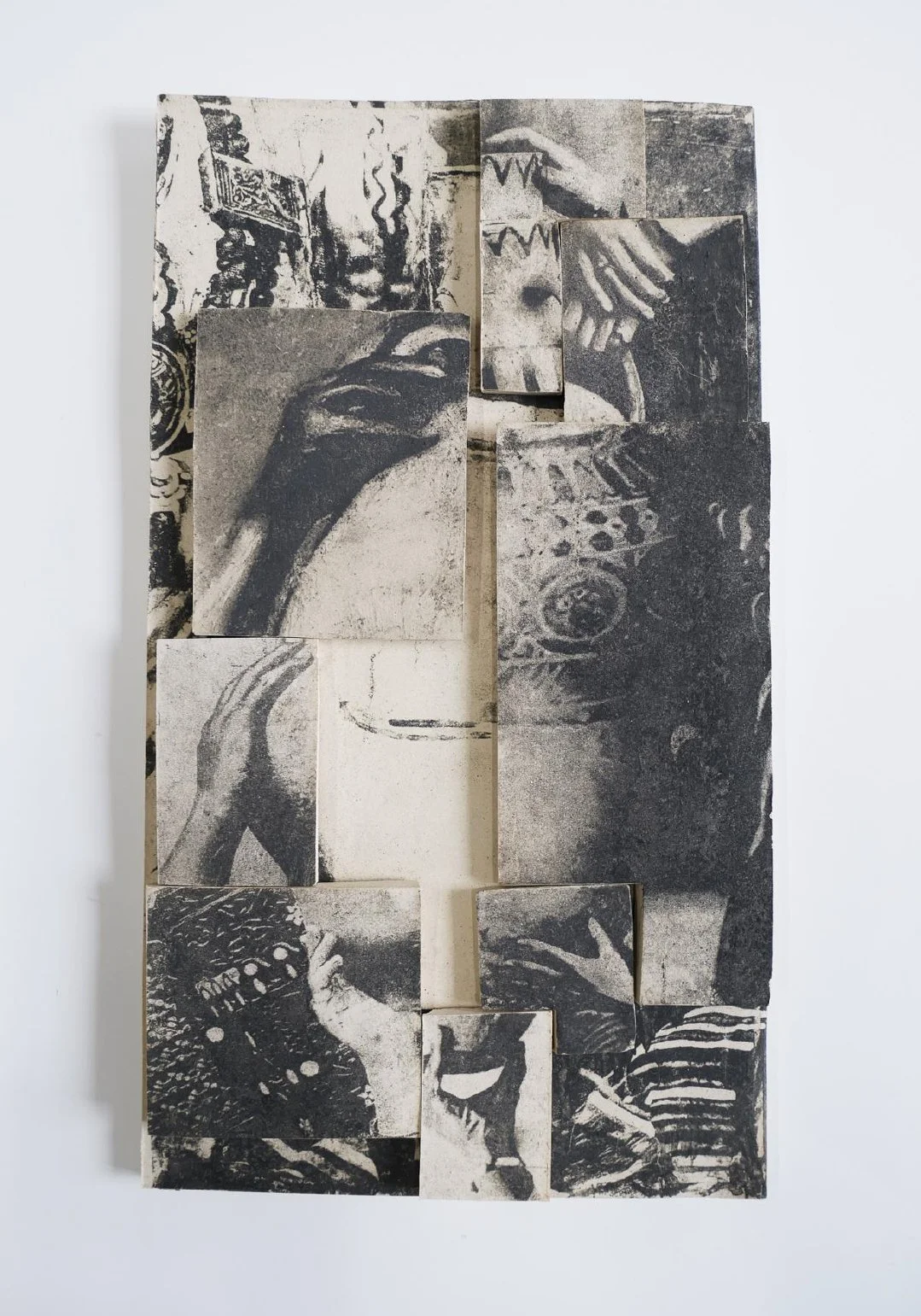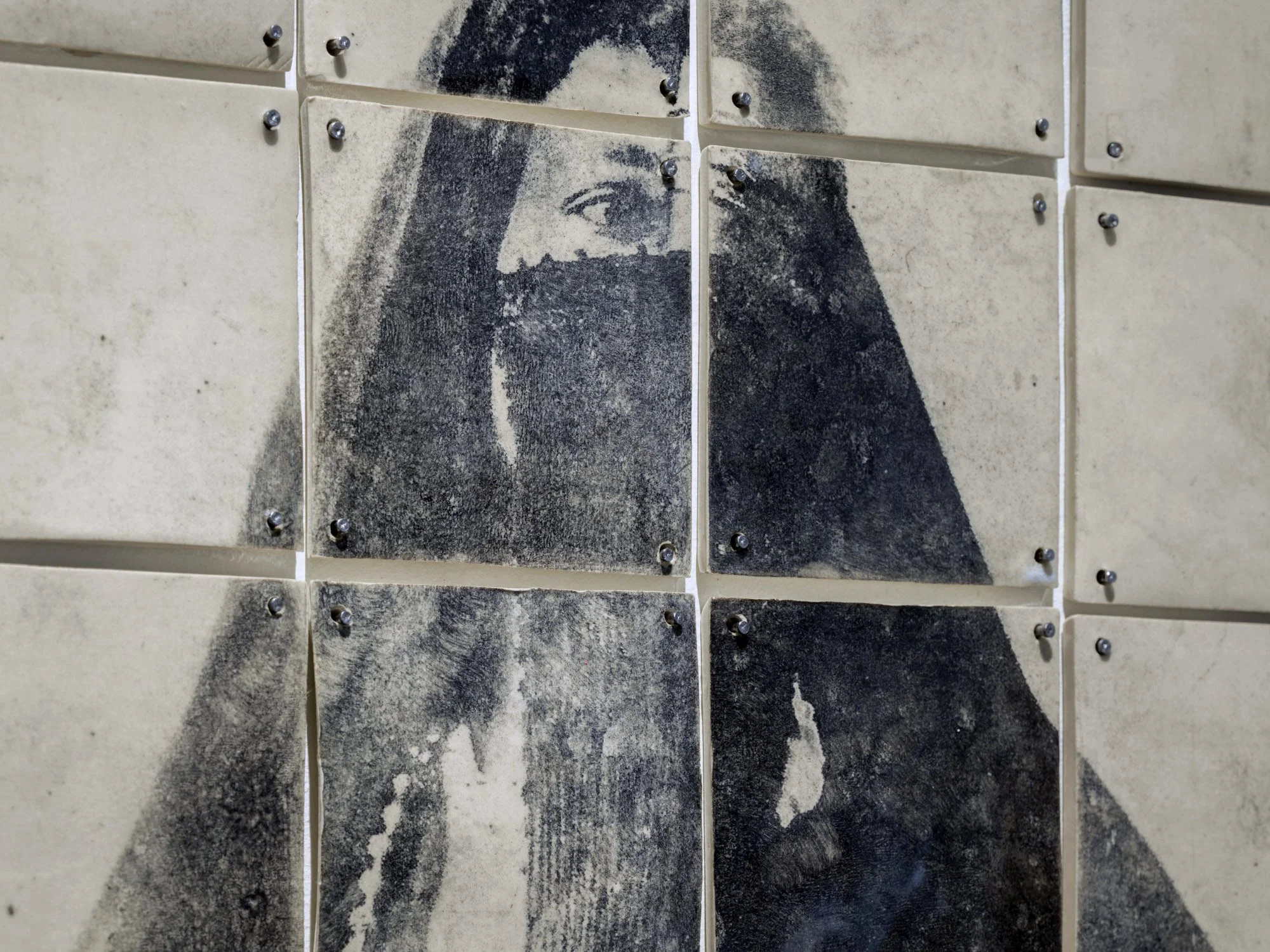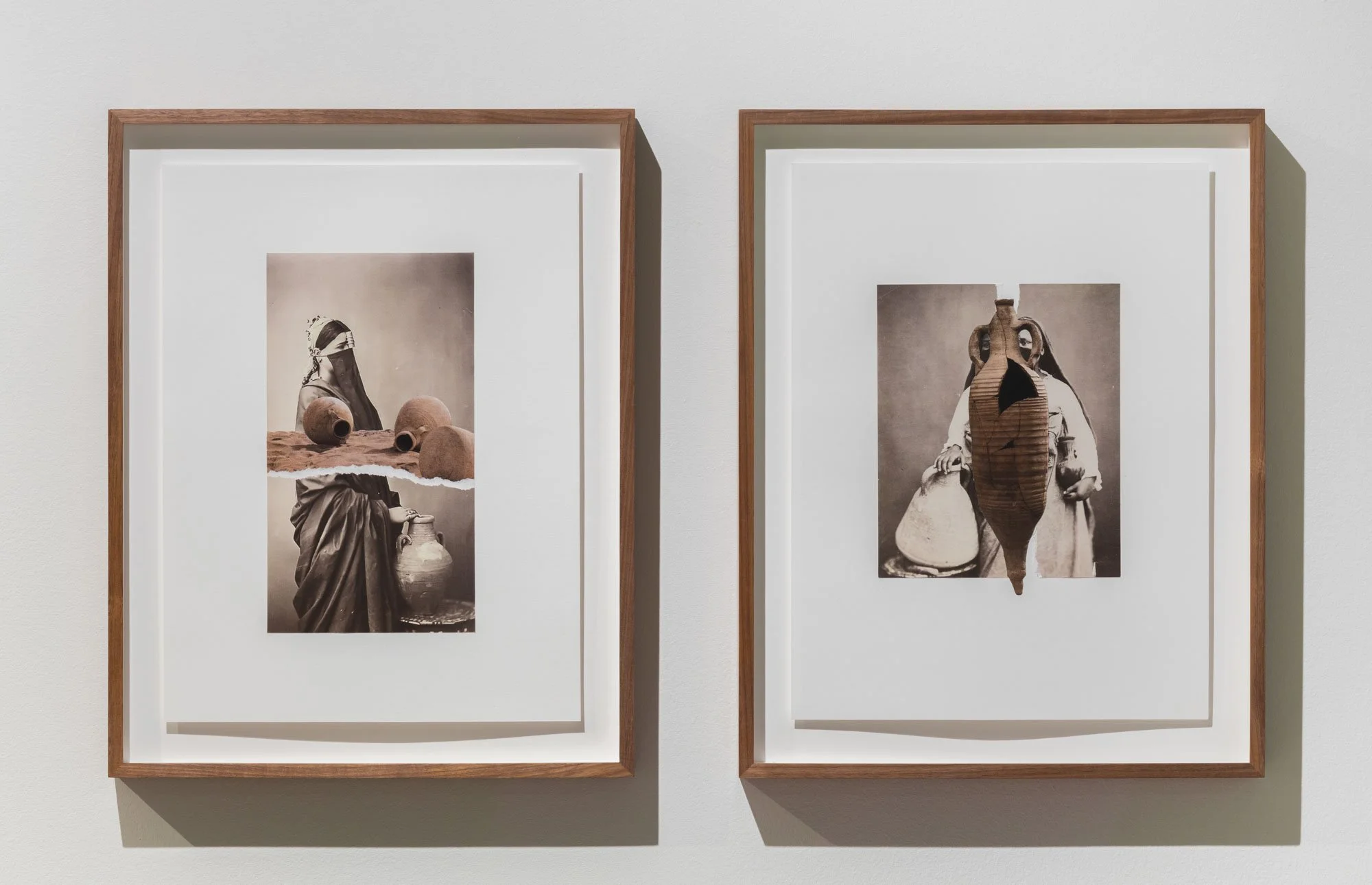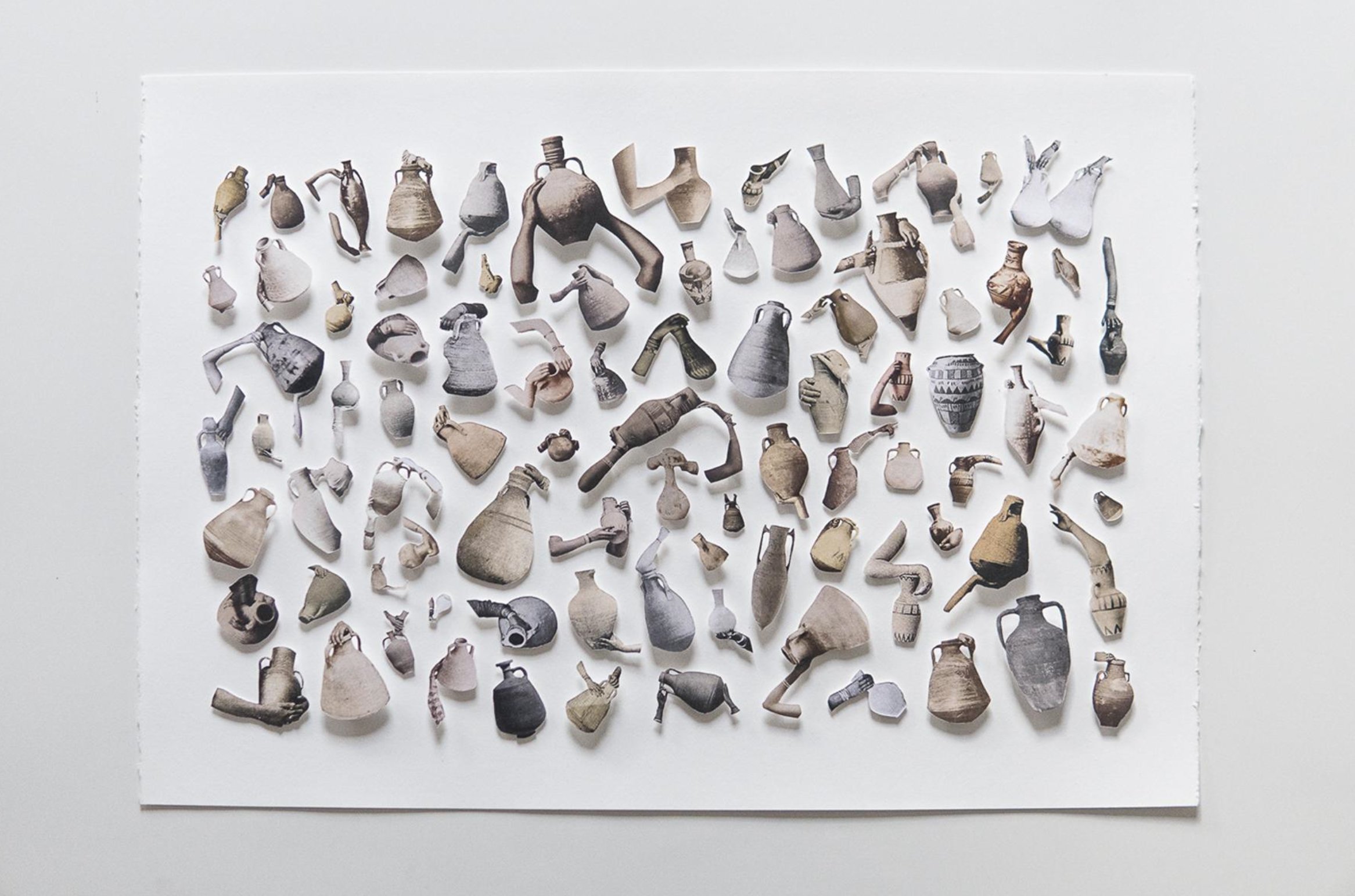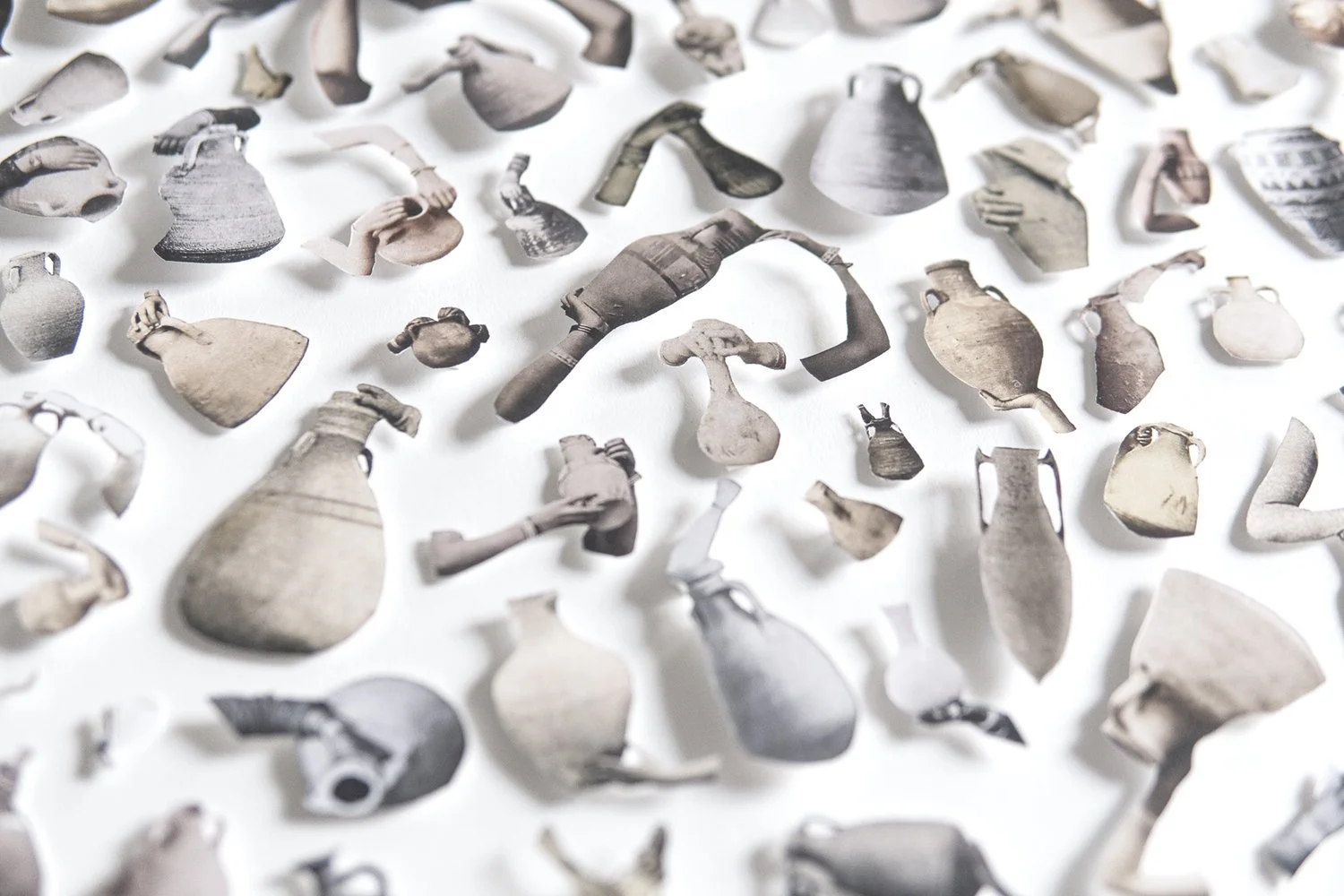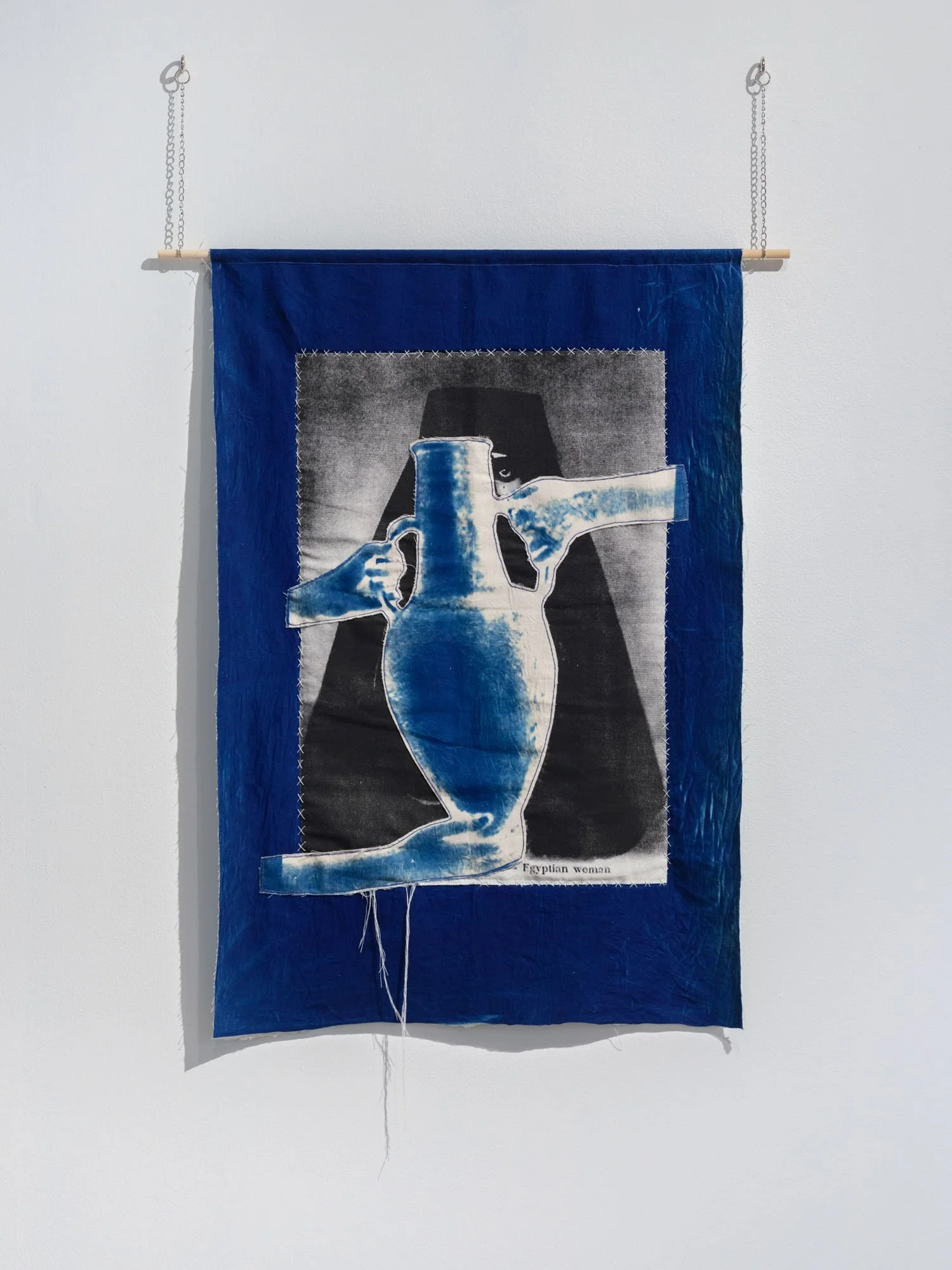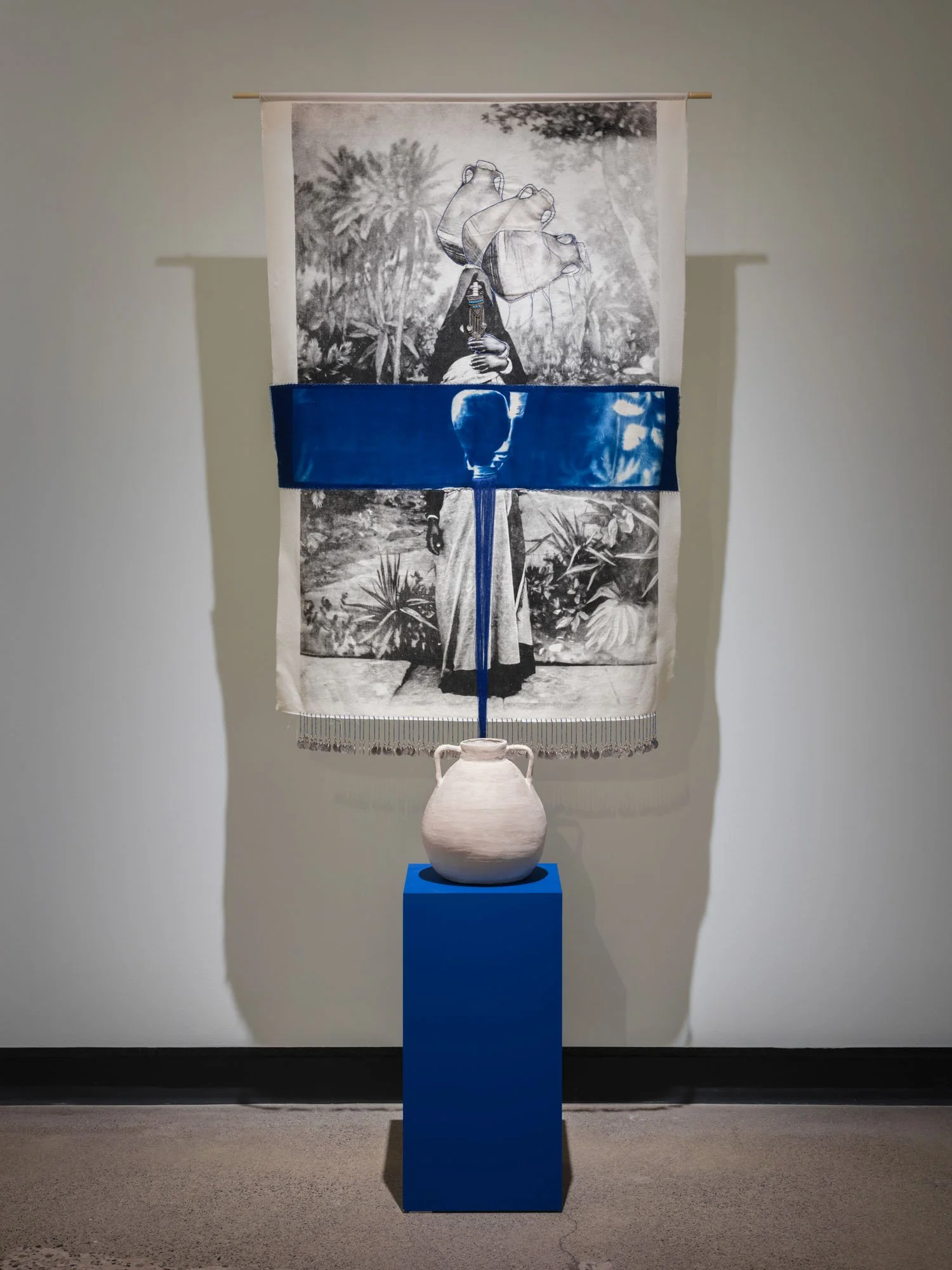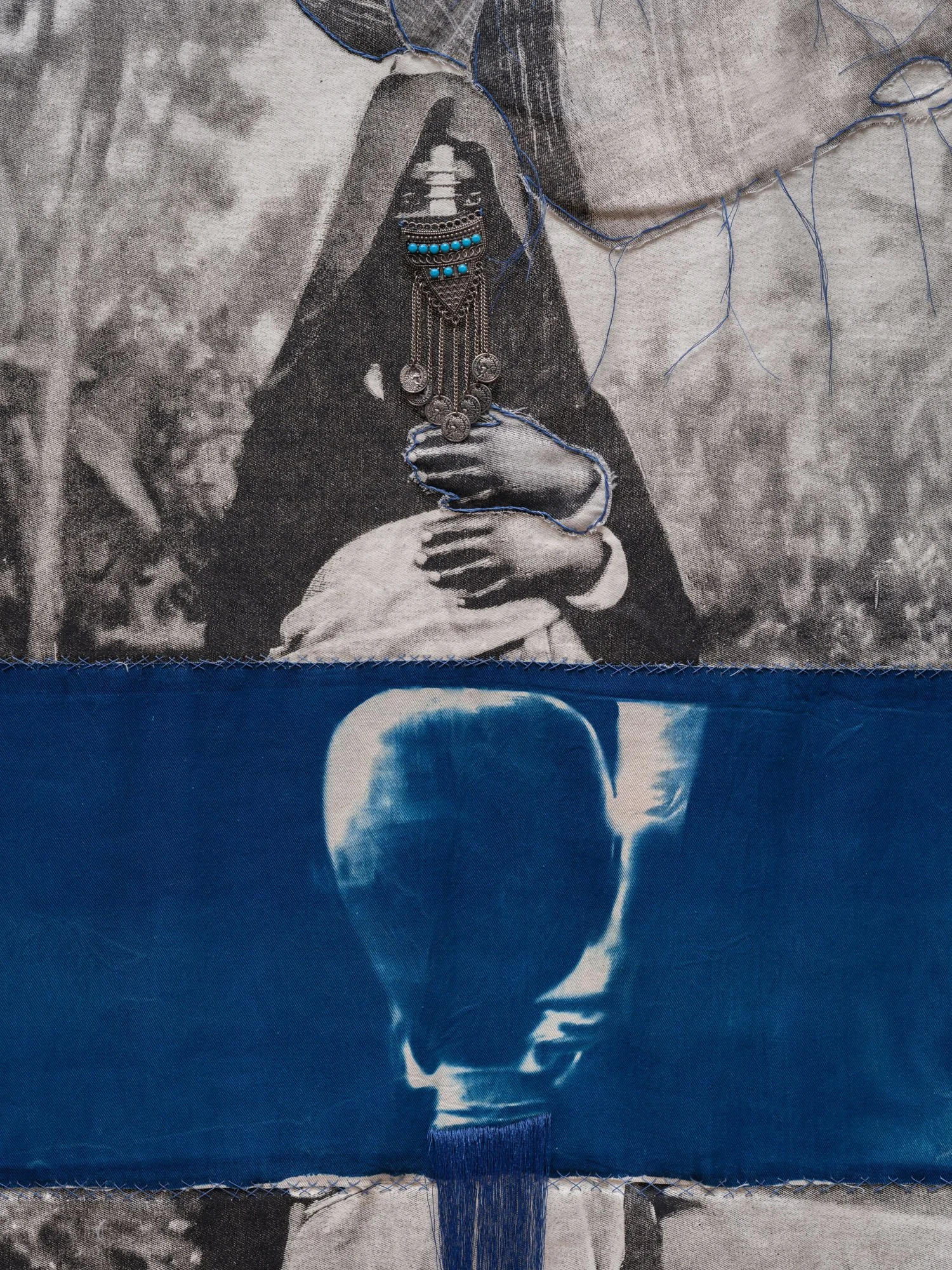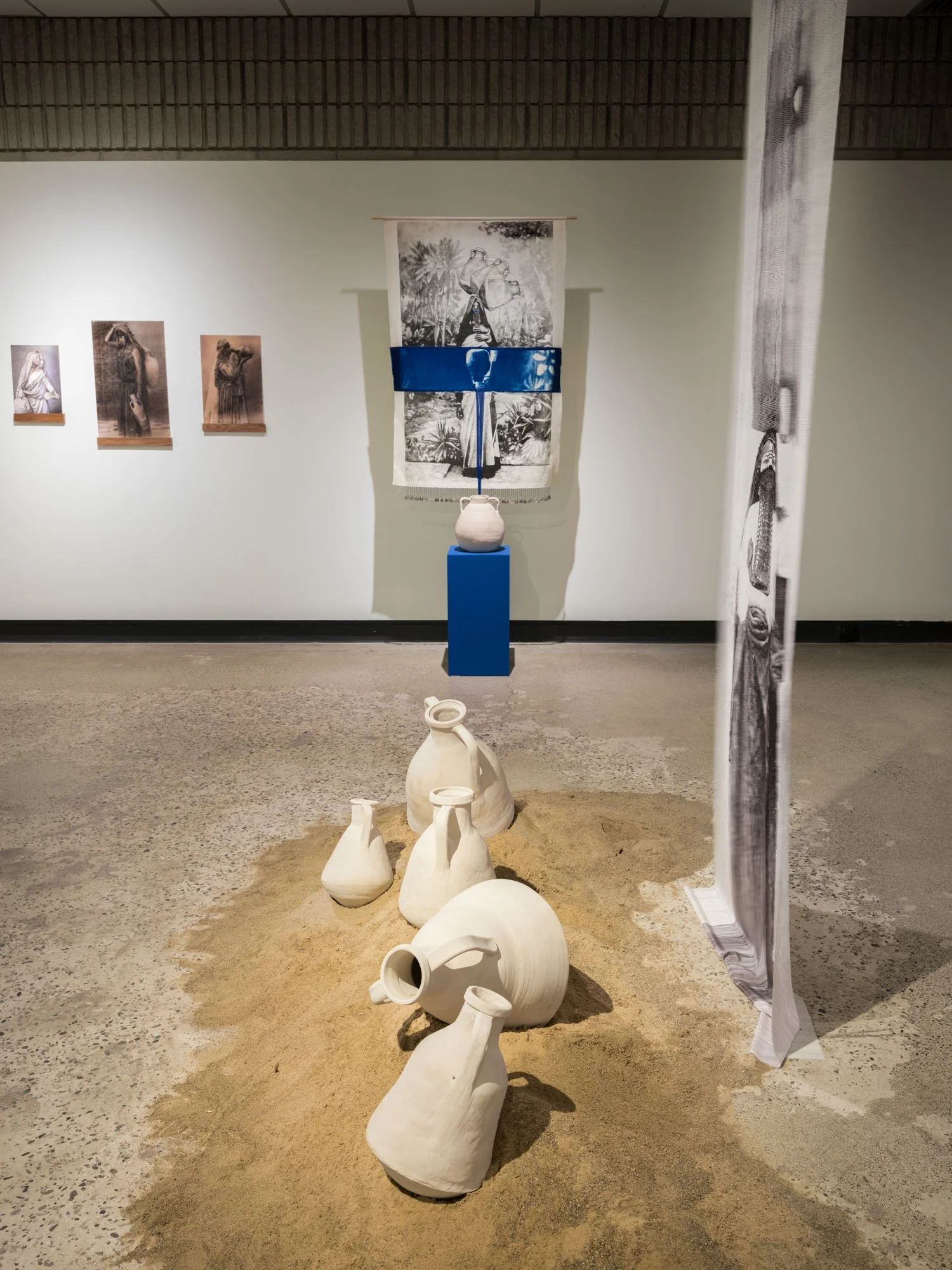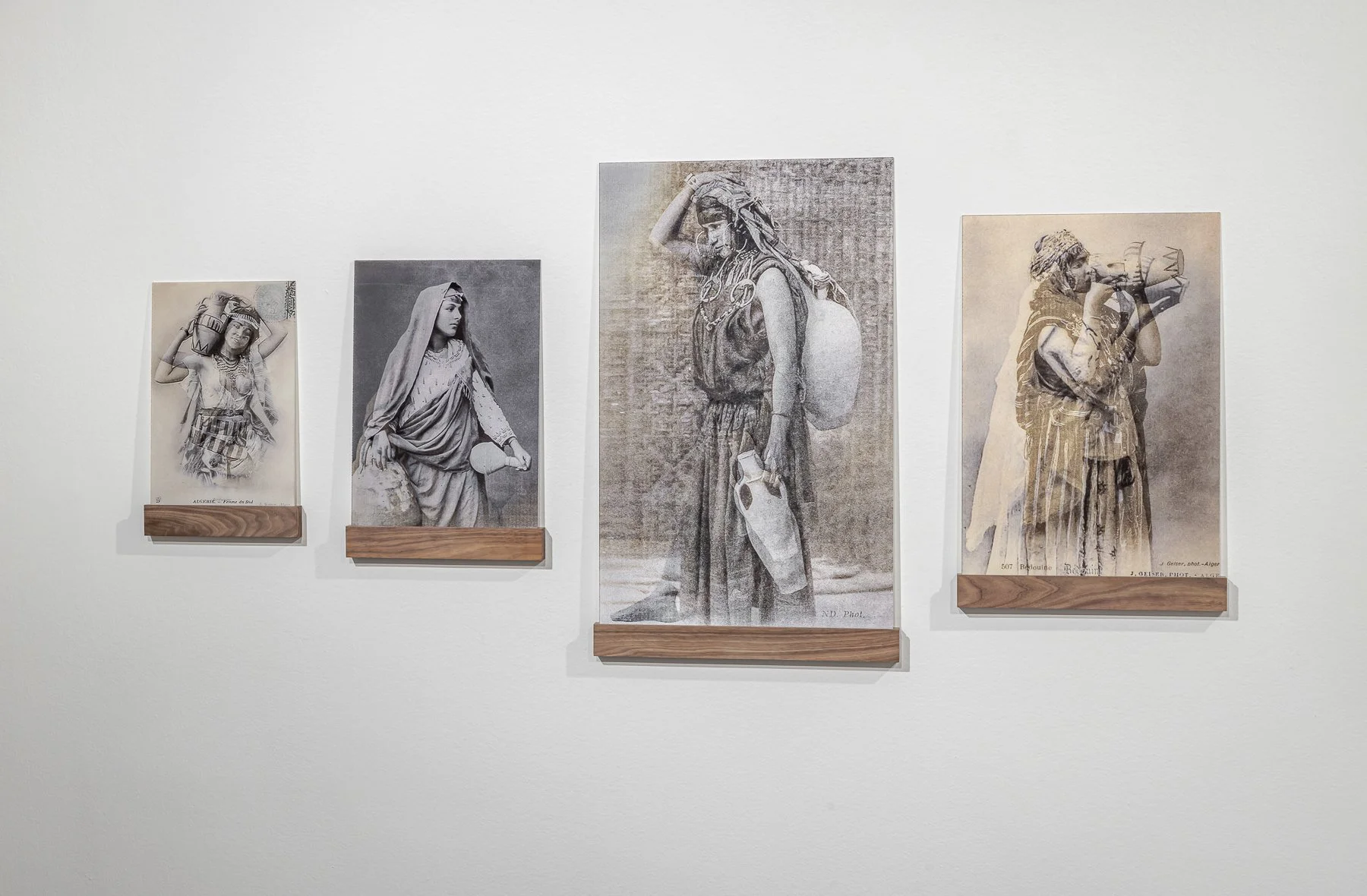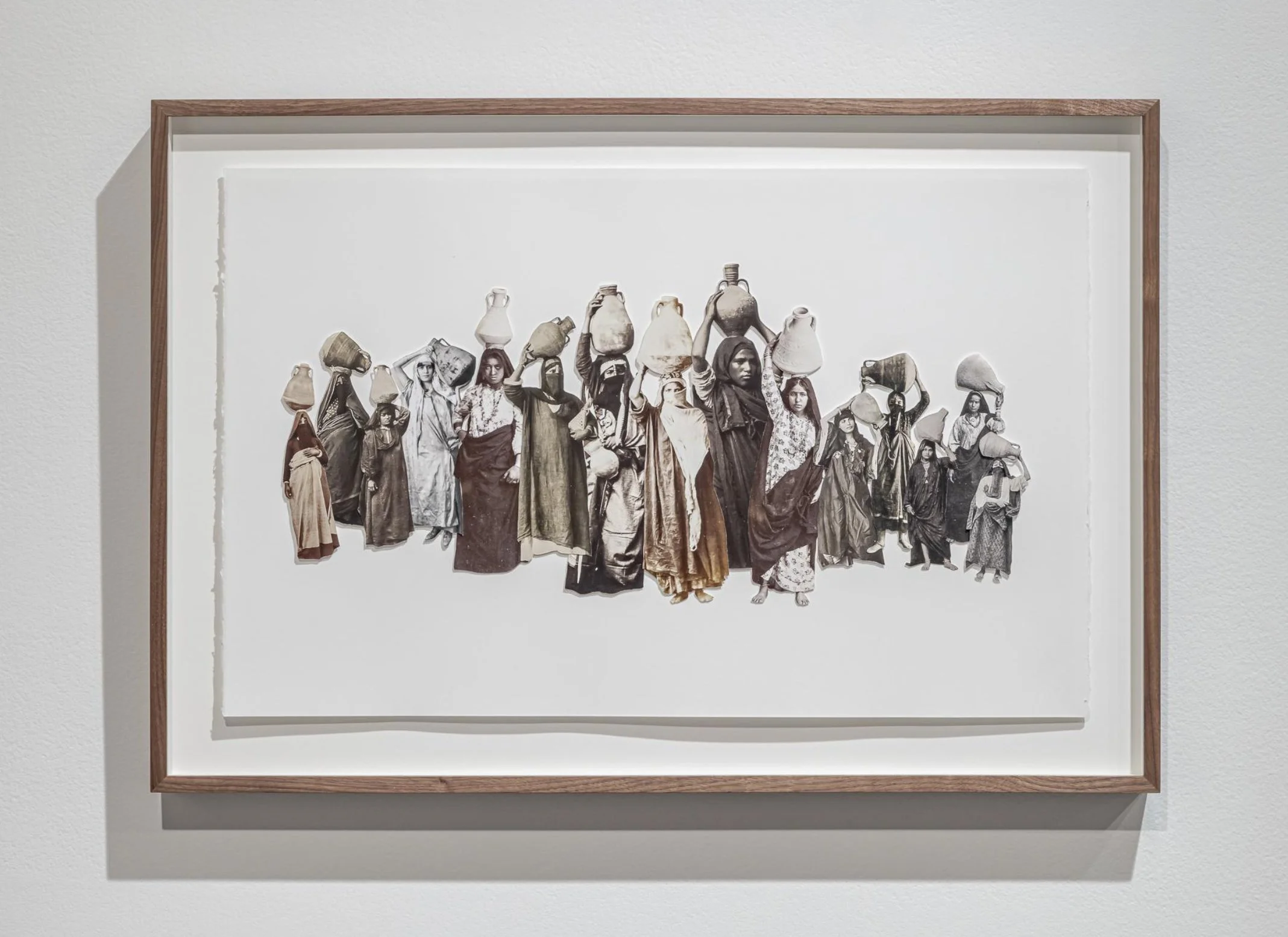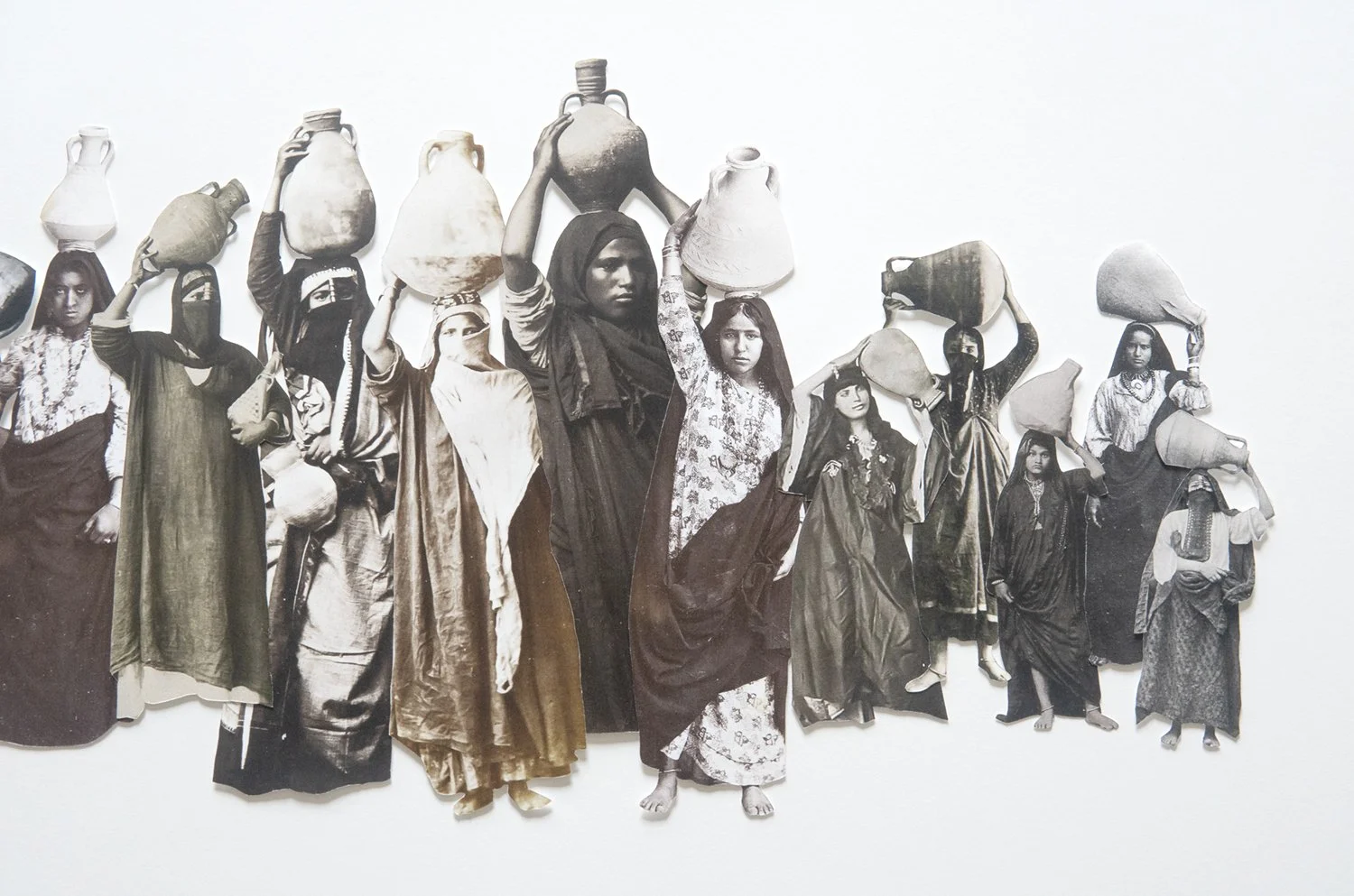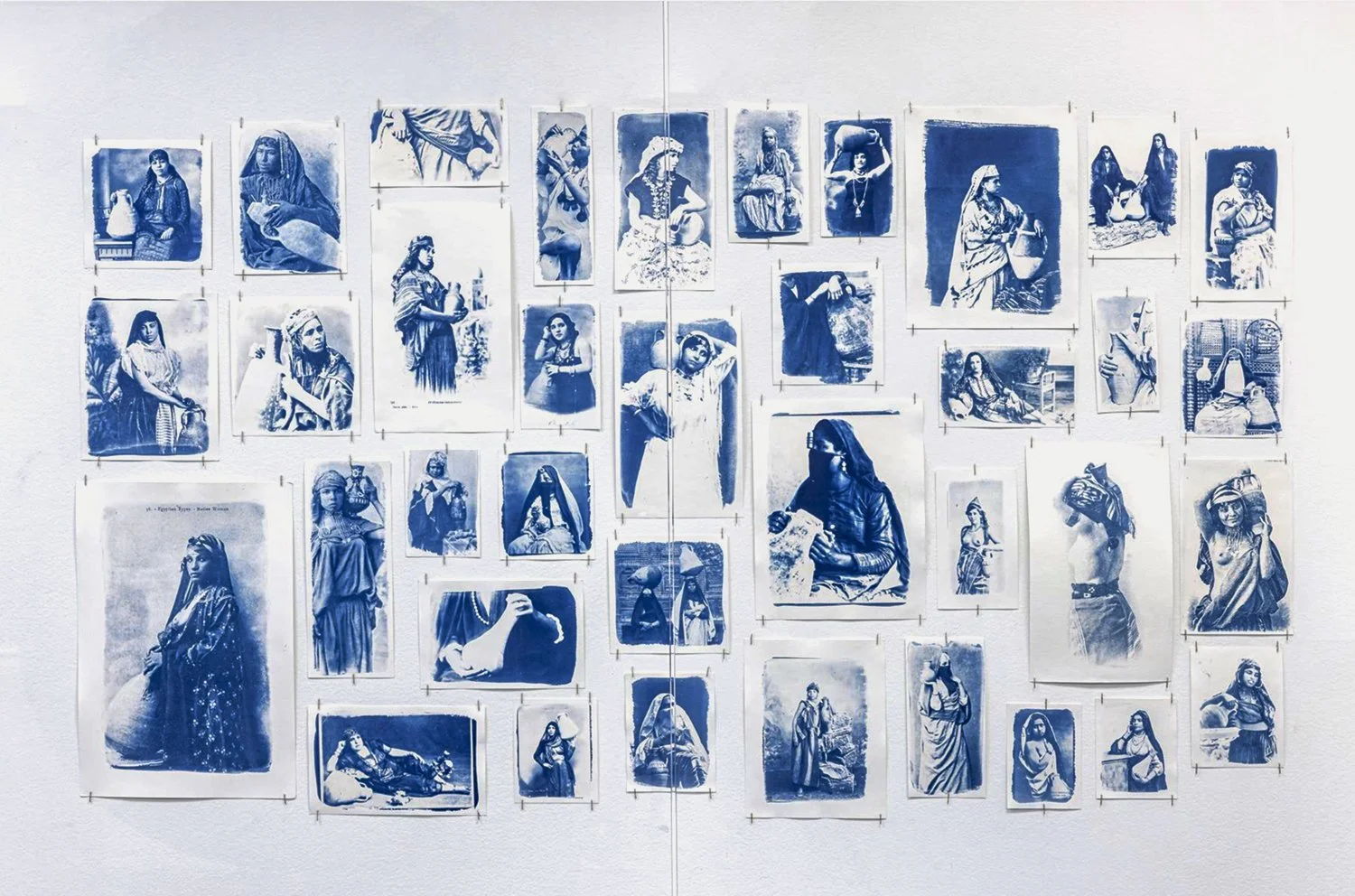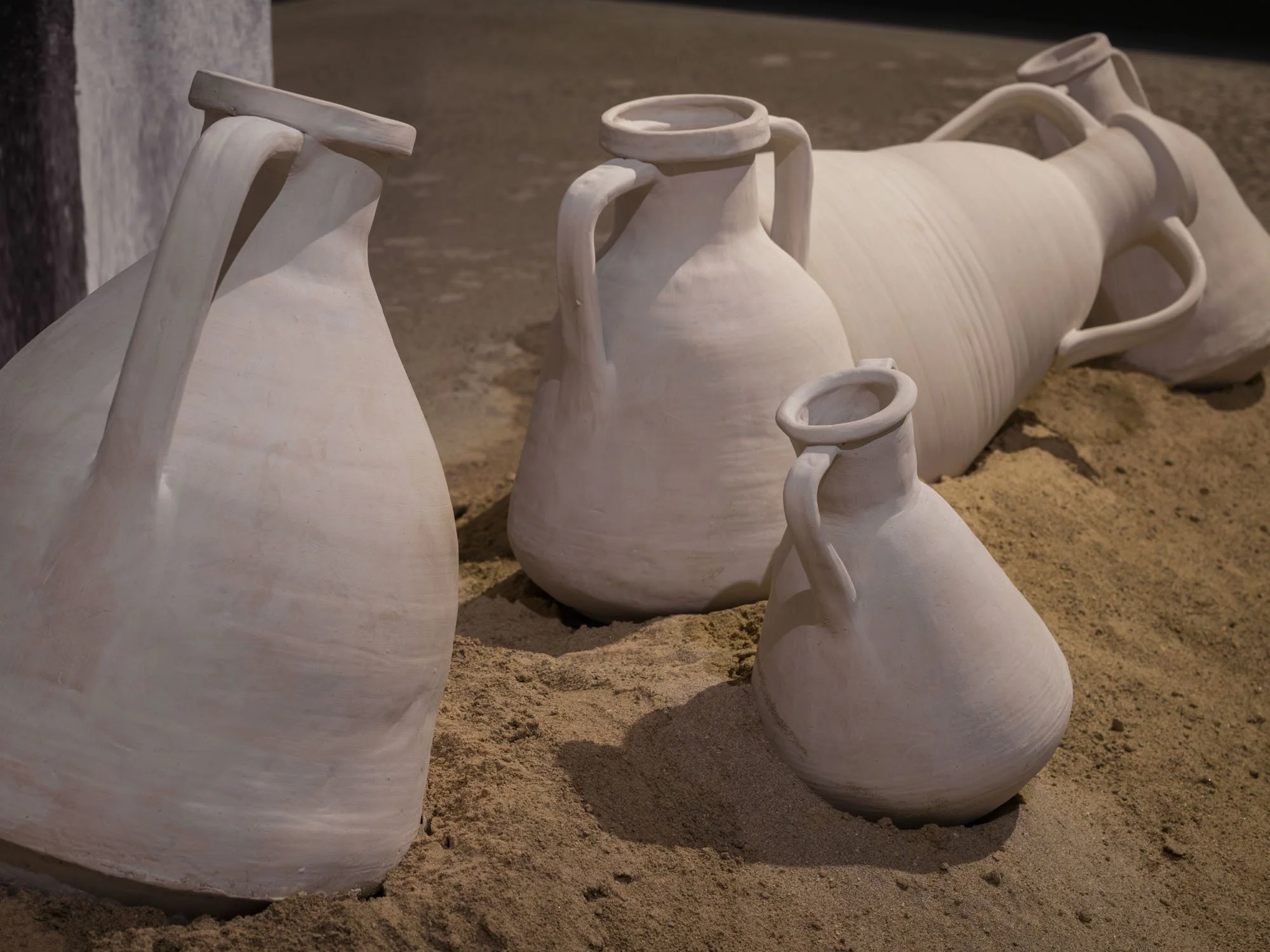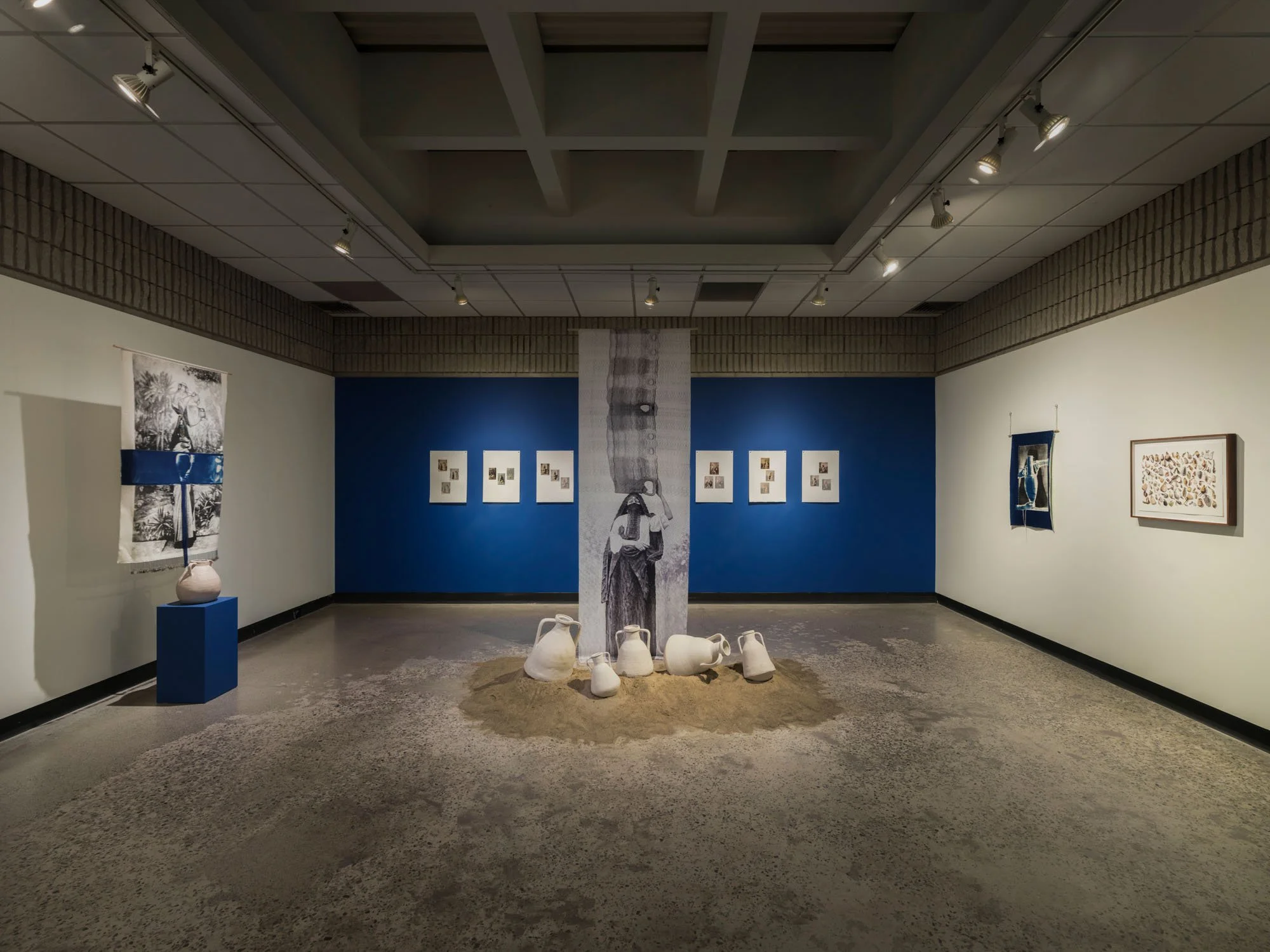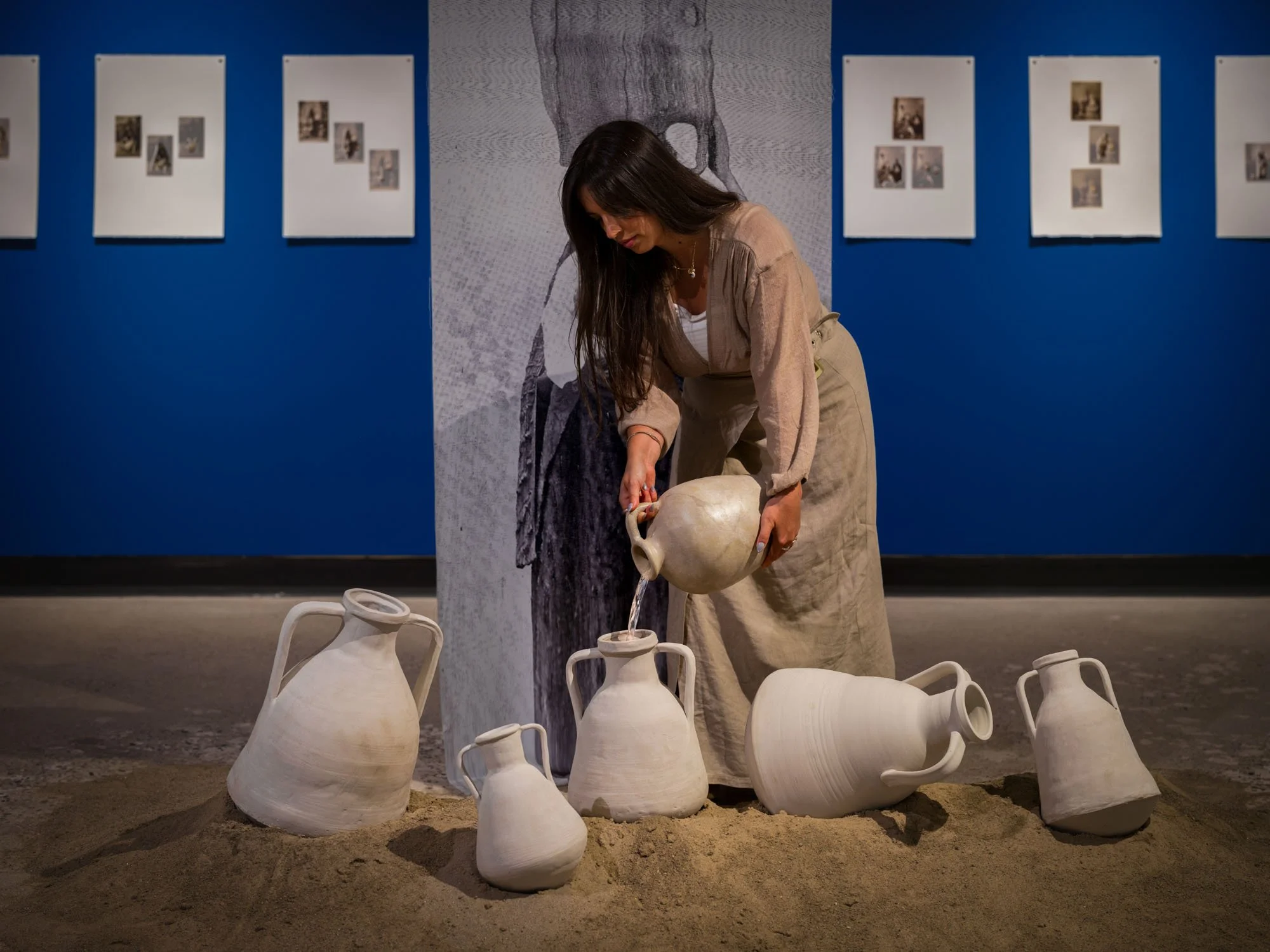A Vessel to Bend Water
Within the expansive history of photography, depictions of women, particularly from the SWANA (South West Asia and North Africa) region, have often been imbued with symbolism that undermines their agency, subjecting them to a struggle between their identities and the ideologies imposed upon them. A Vessel to Bend Water emerges as a critical response to this historical context, drawing from Orientalist digital archives and physical postcards to explore the intricate link between photographic representation and the props used to denote societal status. Central to this exploration is the vessel, a recurring visual metaphor in Orientalist photography, employed to perpetuate colonial agendas and shape societal perceptions of women, their bodies, and their prescribed roles.
This multifaceted body of work unfolds across collage, textile, cyanotype, lenticular prints, ceramics, and photolithography. Each medium engages in a unique dialogue with photography, reinterpreting and disrupting traditional narratives. The vessel, as both subject and object, underscores broader issues of gendered representation, objectification, and control to frame the body as a site of confinement within colonial and patriarchal structures.
Through techniques such as repetition, redaction, tearing, and erasure, the collages challenge the perceived preciousness of archival images. Ceramic collages merge Orientalist imagery with clay, grounding photographic representation in material reality. Textile works layer screen-printed photographs with cyanotypes and embellishments, while lenticular prints expose the repeated use of poses and props. Cyanotypes serve as both a reference to water and an allusion to photography’s foundational role in shaping early portrayals of SWANA women.
Rather than preserving the vessel as a static symbol, the work destabilizes its meaning to offer new ways of seeing, questioning, and remembering.
Photo documentation by Darren Rigo, Leila Fatemi and Toni Hafkenscheid from exhibitions A Vessel to Bend Water at the Art Gallery of Burlington and Now You See Me at the Doris McCarthy Gallery.
—
This project was made possible with the support of the Toronto Arts Council, Ontario Arts Council and the Lucie Foundation.

